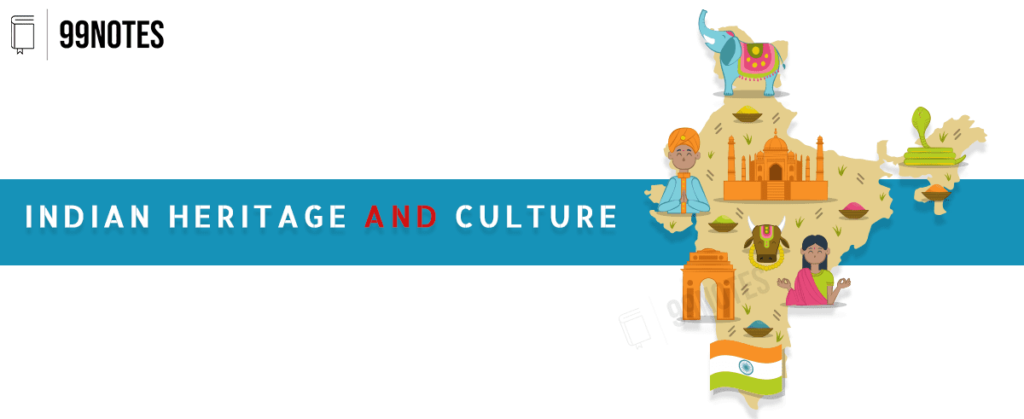
Indian Culture & Heritage UPSC Notes Free Download

Development of Early Civilization
India is often referred to as a civilization state because it has 5000 years old civilizational history. The earliest Indian civilization to be named is the Harappan Civilization (3300 BCE – 1300 BCE), which was contemporary to civilizations
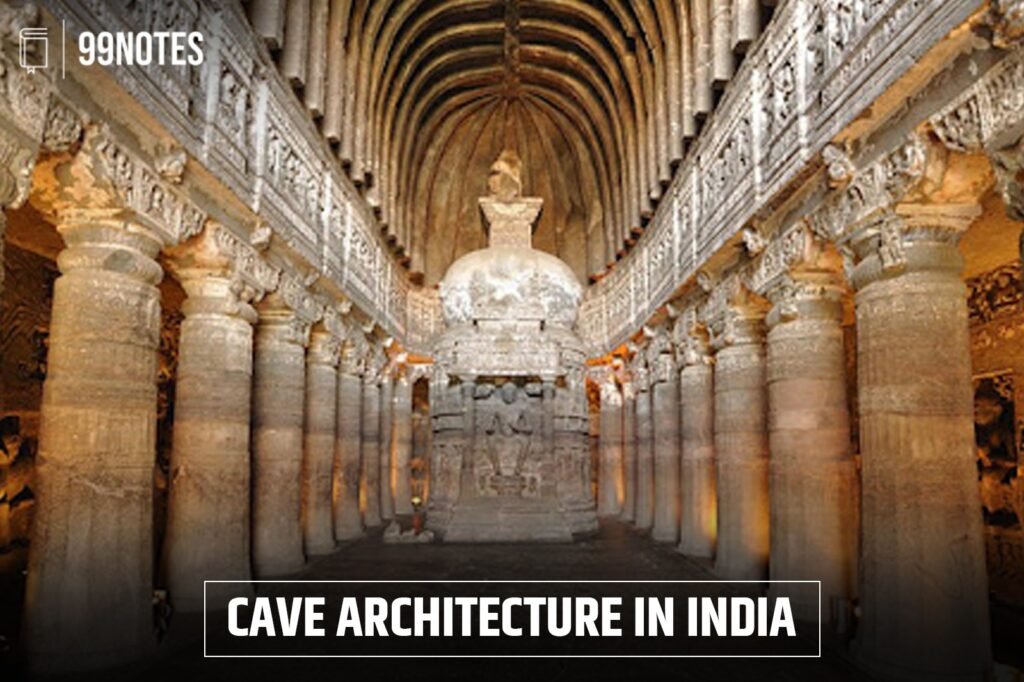
Cave Architecture in India
The importance of caves in human life is inextricably related to their cultural evolution. The pre-historic humans initially used the caves as dwelling units. Gradually, the caves became a focal point for their cultural activities.
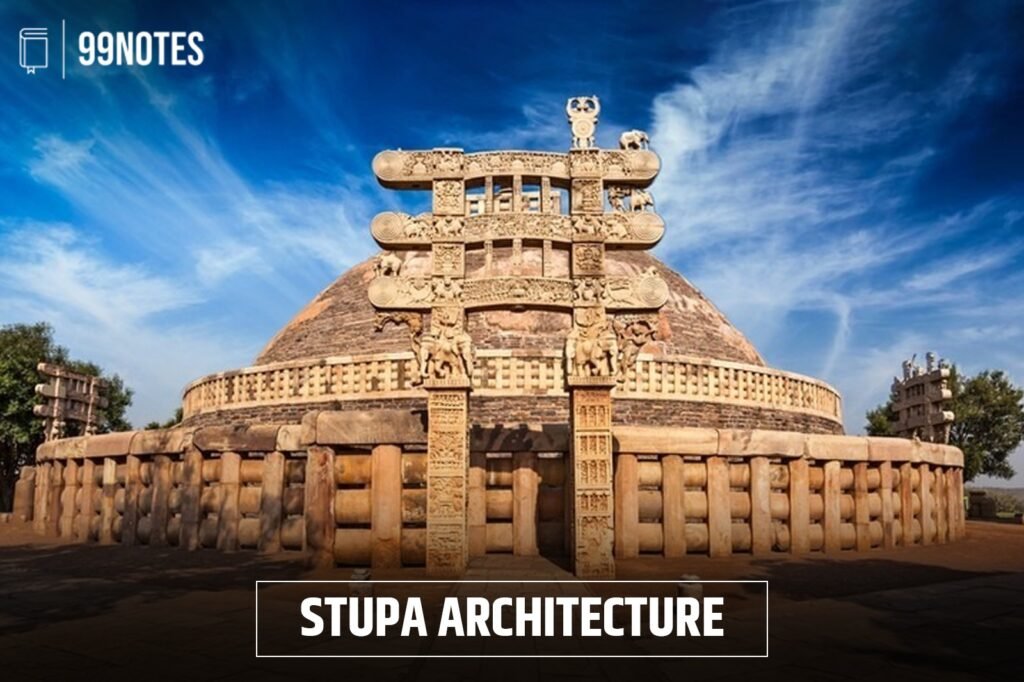
Stupa Architecture
The term stupa was used for the first time in Rigveda but did not refer to any architecture at that time. In the Rig Vedic age, the Stupa was the “shape of fire” coming out of alters during yajna. In some unknown source

Temple Architecture
The temple is a building for religious worship. We can observe that most of the art and architectural remains that have survived from Ancient and Medieval India are religious in nature. Most of them can be termed
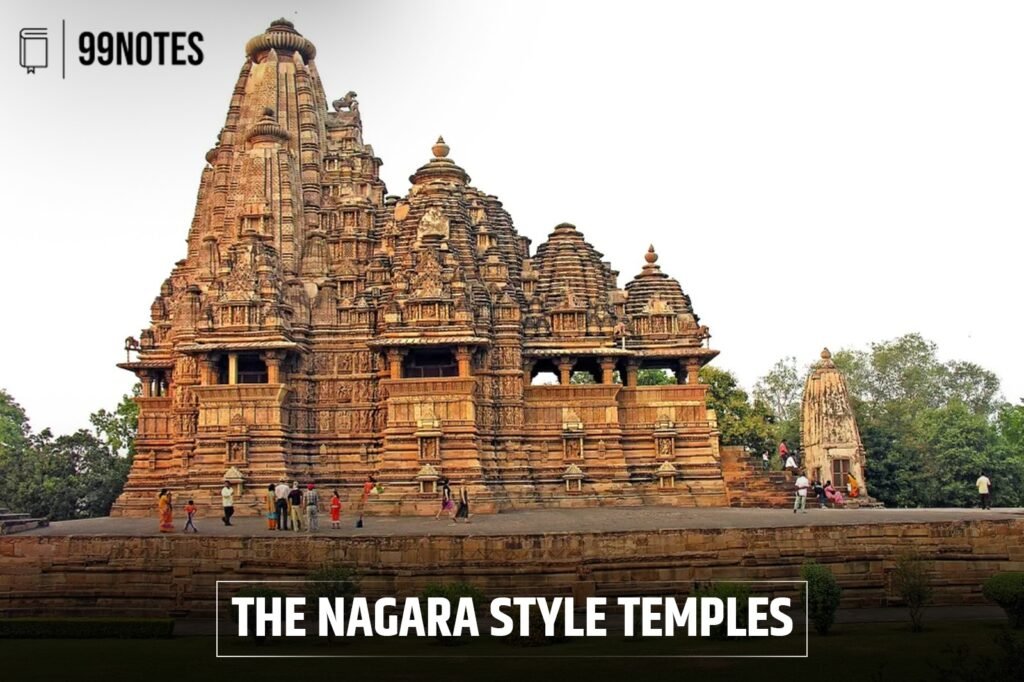
The Nagara Style Temples
The Nagara style became popular in the northern part of India. Numerous temples were constructed at various other places in north India, like Mathura, Banaras, and Dilwara.

Dravidian Temple Architecture
Dravidian architecture/south Indian temple architecture emerged in the Southern parts of the Indian subcontinent during the closing decades of the seventh century
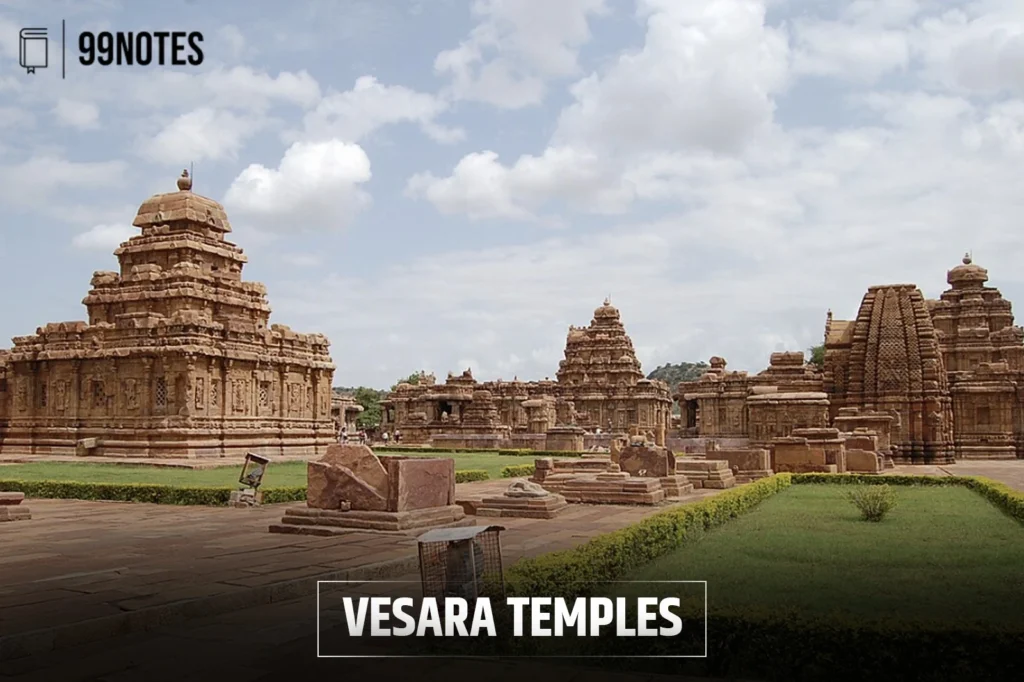
Vesara Style Temple
The Vesara style of temples is a combination of both Nagara and Dravida; its superstructure is bell-shaped. Vesara temples are mainly erected by Chalukyas of Badami and Kalyani, Rashtrakutas and Hoysala Dynasty.
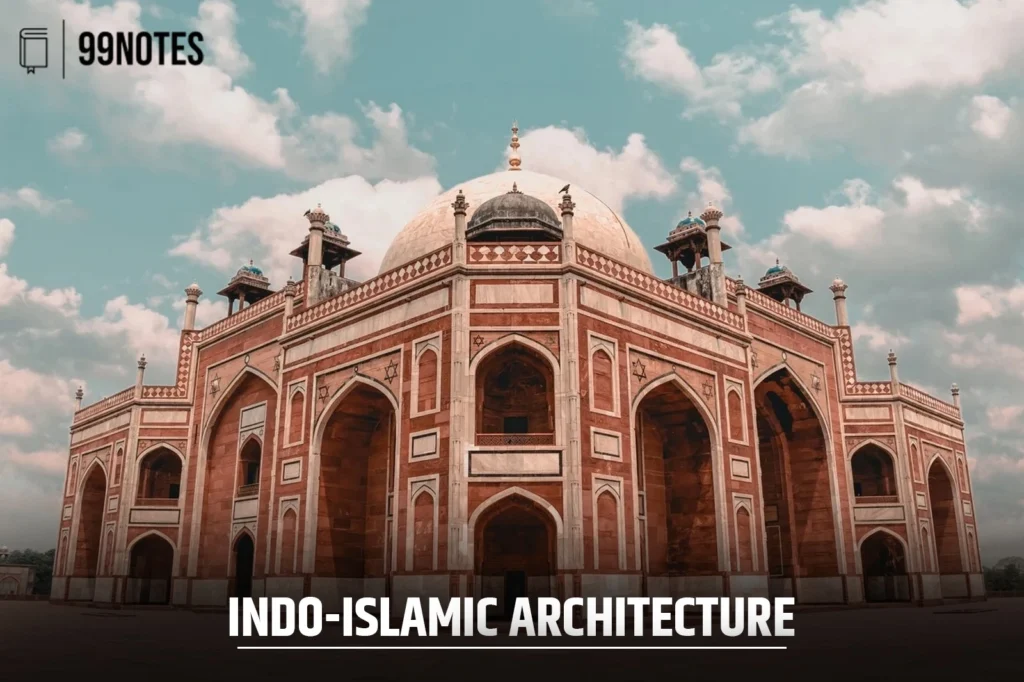
Indo-Islamic Architecture
Indo-Islamic architecture is a unique architecture of the Indian subcontinent generally produced by Islamic patrons. It was produced by and for Islamic patrons and purposes. Despite an initial Arab conquest

Sculptures
The word for sculpture is ‘Shilpa,’ which means to ‘create.’ Sculpture was the favoured medium of artistic manifestation on the Indian subcontinent. It signifies the traditions, forms, and styles of the civilisations of the Indian subcontinent.
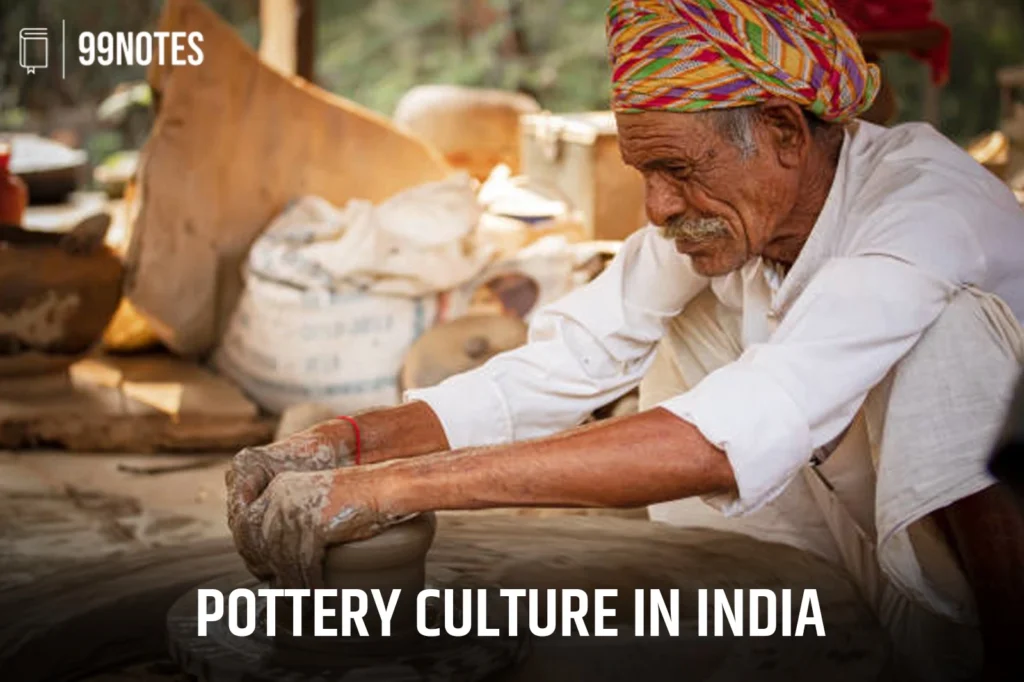
Pottery culture in India
Pottery refers to three categories of utensils: Earthernware, Stoneware and Porcelain (requires minerals like kaolin to be heated up to 1200oC). These may be glazed or unglazed. Evidence of the earliest pottery

History of Currency in India
Indus valley Civilisation: There were no coins in the Indus valley, but clay seals were probably used to facilitate long distance trade, as a mark of guarantee of delivery of consignments.

Metal Sculptures
In this unit, we will try to understand the essential elements and how the metal sculptures were produced. With the techniques known to our people, they have produced incredible artistic bronze sculptures

Painting in India
India had an exquisite tradition in the art of painting in the ancient age, and most of the early period paintings were based on religious themes and showed episodes from the Hindu epics or Jain and Buddhist literature.

Miniature paintings
Miniature paintings refer to the small size of paintings, generally done on paper or cloth, instead of traditional paintings that were done on walls. Miniatures paintings became popular as soon as manuscripts became common.

Indian Folk Paintings
Folk art is defined as ‘the art of common people expressed in simple language for educating and entertaining the simple village folk’. In this unit, we are to focus on the genre of Indian folk paintings

Modern Paintings
After the advent of the Europeans in India, new progressions in the field of painting took place. Indian art had always been abstract. Artists who came along British, helped Europeans form a perception about India

DANCES OF INDIA
The Dances of India can be broadly classified into three categories:
Classical Dance Folk Dance Modern Dance forms. In this chapter, we are mainly going to deal with the above two.
INDIAN CULTURE & HERITAGE
The study of Indian culture and heritage is an important part of the UPSC Civil Services Exam, as it tests candidates’ knowledge of the diverse and rich cultural traditions of India.
Some of the key topics that candidates should be familiar with when studying Indian heritage and culture for the UPSC Civil Services Exam include:
- Ancient Indian culture: Candidates should be familiar with the major cultural achievements of ancient India, such as the Vedas, the Upanishads, and the epics of the Mahabharata and the Ramayana.
- The Indus Valley Civilization: Candidates should be familiar with the Indus Valley Civilization and its achievements in areas such as urban planning, trade, and art.
- Classical Indian culture: Candidates should be familiar with the major cultural achievements of classical India, such as the Gupta Empire, the spread of Buddhism and Jainism, and the development of classical Sanskrit literature.
- Indian folk and tribal cultures: Candidates should be familiar with the diverse folk and tribal cultures of India, including their traditions, customs, and art forms.
- Modern Indian culture: Candidates should be familiar with the major cultural trends of modern India, such as the influence of colonialism, the emergence of Indian nationalism, and the impact of globalization on Indian culture.
The study of Indian heritage and culture is important for several reasons, especially for candidates preparing for the UPSC Civil Services Exam.
Here are a few reasons why studying Indian culture and heritage is important:
- Understanding the present: India’s cultural heritage has shaped the country’s present-day culture and society in many ways. By studying Indian heritage and culture, you can gain a better understanding of the cultural traditions and values that continue to influence India today.
- Improving analytical skills: The study of Indian heritage and culture requires students to analyze and interpret a wide range of primary and secondary sources, such as historical texts, artifacts, and media reports. This can help you develop critical thinking and analytical skills that are useful in a variety of fields.
- Civil Services Exam: The UPSC Civil Services Exam is a competitive exam in India that is conducted to select candidates for various government positions, including the Indian Administrative Service (IAS), Indian Police Service (IPS), and Indian Foreign Service (IFS). Indian heritage and culture is one of the subjects that is covered in the exam, and a thorough understanding of this subject can help you score well on the exam.
- Appreciating diversity: India is a diverse and multicultural country, and its cultural heritage reflects this diversity. By studying Indian heritage and culture, you can gain a deeper appreciation of the diversity of India’s culture and the ways in which it has influenced the country’s present-day culture and society.
- Developing cultural awareness: The study of Indian heritage and culture can help you develop cultural awareness and understanding, which are valuable skills in today’s interconnected and globalized world. This can be useful in a variety of professional and personal situations, such as working with people from different cultural backgrounds or traveling to other countries.
Top of Form
Indian Heritage and Culture
In this section, we are going to discuss Architecture, sculptural Art, paintings, performing Art, Language and Literature and Indian Heritage.
Architecture: Architecture is the Art and science of building construction. Architecture is the shaping of reality according to the laws of beauty in the building of houses and structures designed to cater to man’s needs for housing and public premises.
Sculptural Art: Indian sculpture is the result of Indian Culture. The sculptural tradition came from the folk level in villages. The first instrument was the potters’ wheel, which turned the clay and created different shapes of pots and dishes. Initially, images were created in clay on a small scale, and slowly, it progressed into terracotta art.
It includes the development of Early Civilisation, Caves, Stupa, the Gupta Period, the Evolution of Dravida architecture, Vesara and other Regional styles of Deccan Indian, Fort Architecture, Indo Islamic Art, and Colonial And post-independence Architecture.
Here, we will learn in detail about Pottery, Terracotta, Bronze sculpture, Buddhist sculpture, cave sculptures, temple sculptures and coins.
Paintings: Painting as an art in India has a long heritage and history. Initially, it can be seen in rock art. It was used as a means of communicating religious principles and to narrate stories or incidents in the historical. In medieval times, painting had a significant position as an independent art.
There are different types of paintings that we can study in detail. The paintings include cave paintings, mural traditions, miniature, modern and folk paintings.
Performing art often aims to express one’s feelings and emotions in which artists use their voices, bodies, or objects to convey artistic expression. It has been well placed in the civilization and traditions of Ind=ian society.
Performing Art can be classified as dance, music, martial arts, puppetry, theatre and cinema.
Language and Literature: language is commonly considered as a means of communication. But it is also a reflection of the society it has evolved in. The languages in India are classified into different types, such as Indian languages, official languages, and six classical languages of India.
Literature showcases the panorama of the history of mankind: the social institutions, scientific achievements, religious beliefs, and philosophical ideas. The objectives are to present the journey of thoughts from the earliest times to the present.
Here, we will learn about literature, which is classified as literature in ancient, medieval, and modern times.
Indian Heritage: Indian heritage carries the meaning of culture too. Whatever we inherit from our past can be called heritage. This includes craft traditions, music, dance, painting, architecture and other art forms, traditions of production and technology, etc.
We will study religious traditions in detail, the schools of philosophy, festivals and fairs, UNESCO’s list of World Heritage sites in India, Intangible Cultural Heritage, handicrafts, and awards.
- Indian Culture & Heritage UPSC Notes Free Download
- Development of Early Civilization
- Cave Architecture in India
- Stupa Architecture
- Temple Architecture
- The Nagara Style Temples
- Dravidian Temple Architecture
- Vesara Style Temple
- Indo-Islamic Architecture
- Sculptures
- Pottery culture in India
- History of Currency in India
- Metal Sculptures
- Painting in India
- Miniature paintings
- Indian Folk Paintings
- Modern Paintings
- DANCES OF INDIA

